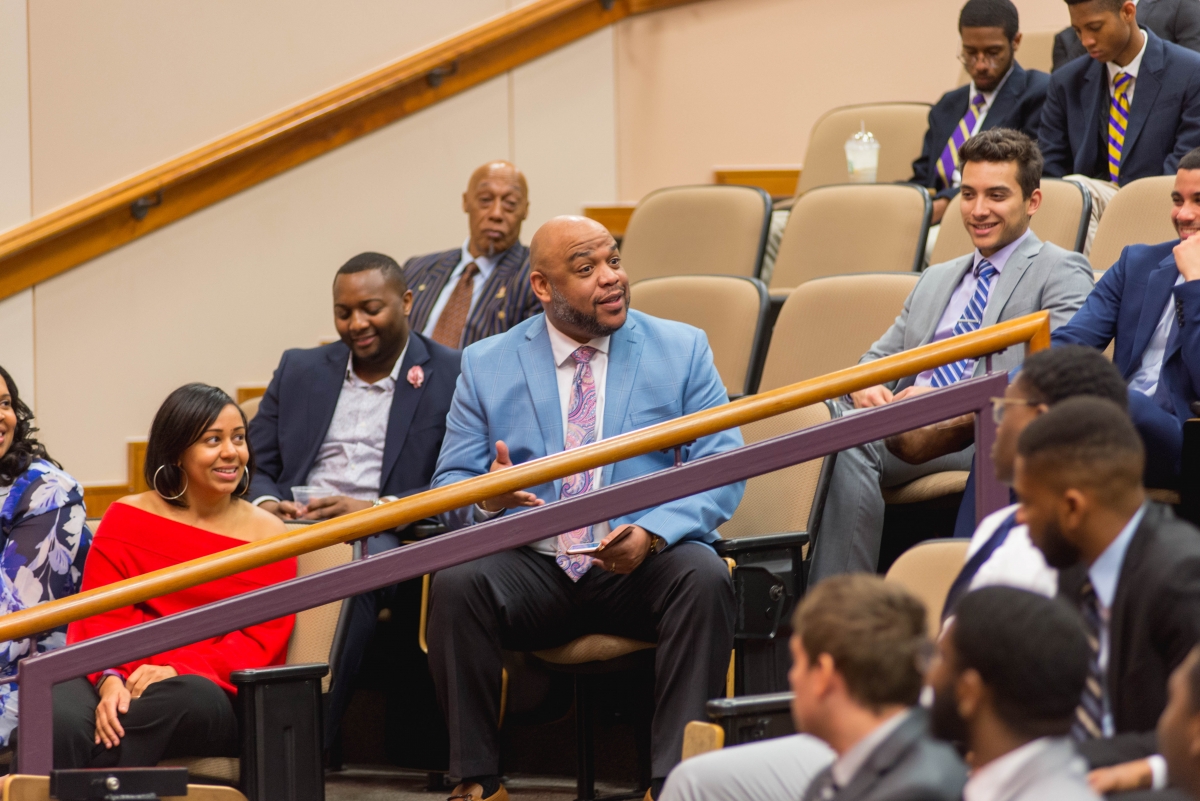
 For seven years, the Smith Business Academy, designed for black and Latino men; and the Women’s Empowerment Institute, its female counterpart, have provided a supportive community of like-minded peers to help thwart incongruence in academic achievement experienced at many predominantly white institutions (PWI).
For seven years, the Smith Business Academy, designed for black and Latino men; and the Women’s Empowerment Institute, its female counterpart, have provided a supportive community of like-minded peers to help thwart incongruence in academic achievement experienced at many predominantly white institutions (PWI).
“I was told that there was a huge achievement gap among black and Latino men, who were graduating at a much lower pace than their peers on campus,” says Victor Mullins, associate dean of undergraduate studies and diversity officer at the University of Maryland’s Robert H. Smith School of Business.
It was certainly the case at several PWIs nationwide, particularly as state flagship schools become more selective and as racial diversity significantly declined.
Mullins invited all the black and Latino male students to an open house one day, about 50-60 of them. “I asked, ‘What do you all have in common?’ ” he says. They didn’t know. Mullins told them they were all Maryland Smith students.
“They were like, ‘Oh my.’ They were used to just seeing one or two in the classroom,” he says. “I told them, the only way to excel is if you create the fire from within.”
So began the Smith Business Academy. Its focus is to help each other with a positive light that would bring success. “Elements of being better,” Mullins describes it, not a complaint session about how someone felt mistreated by a professor or fellow student. The group began bringing in speakers and corporate partners to explore particular areas of expertise, such as learning about hedge funds or how to be better in case interviews.
The group is managed by a set of officers, who in turn, will select the next installment of officers. Members must apply to join and are expected to attend various events. If they miss a certain number of events, their membership is discontinued. “We have a lot of expectations,” Mullins says. “These series of events are designed to make you better.” Missing an event, he says, is “just like skipping class.” At the end of each semester, the group hosts a formal dinner, an opportunity to reflect on what they’ve gained.
As the Smith Business Academy showed signs of success, a female student approached Mullins about launching one for women minority students. She pointed out that even though women were not falling into the achievement gap like their male peers, they still faced similar feelings as their male counterparts in the classroom. With that, the Smith Women’s Empowerment Institute (WEI) was founded.
“Connecting with other minority students has created an environment of support and helped ease my transition into the Smith School,” says Carleinni Mendez Estepan, president of WEI and a junior majoring in finance and information systems. “It's nice to see familiar faces walking down the halls and in classes.”
Through the programs, the students are finding success and recruitment at companies large and small – including the “big four” accounting firms, Goldman Sachs, Amazon, Google. They are being accepted into top MBA programs. And many of them, after graduation, return to Smith to talk about their journey.
“It’s a phenomenal cyclical program where you’re reaching back and bringing people with you,” Mullins says.
–By Rin-rin Yu, special writer for Maryland Smith
Media Contact
Greg Muraski
Media Relations Manager
301-405-5283
301-892-0973 Mobile
gmuraski@umd.edu
About the University of Maryland's Robert H. Smith School of Business
The Robert H. Smith School of Business is an internationally recognized leader in management education and research. One of 12 colleges and schools at the University of Maryland, College Park, the Smith School offers undergraduate, full-time and flex MBA, executive MBA, online MBA, business master’s, PhD and executive education programs, as well as outreach services to the corporate community. The school offers its degree, custom and certification programs in learning locations in North America and Asia.